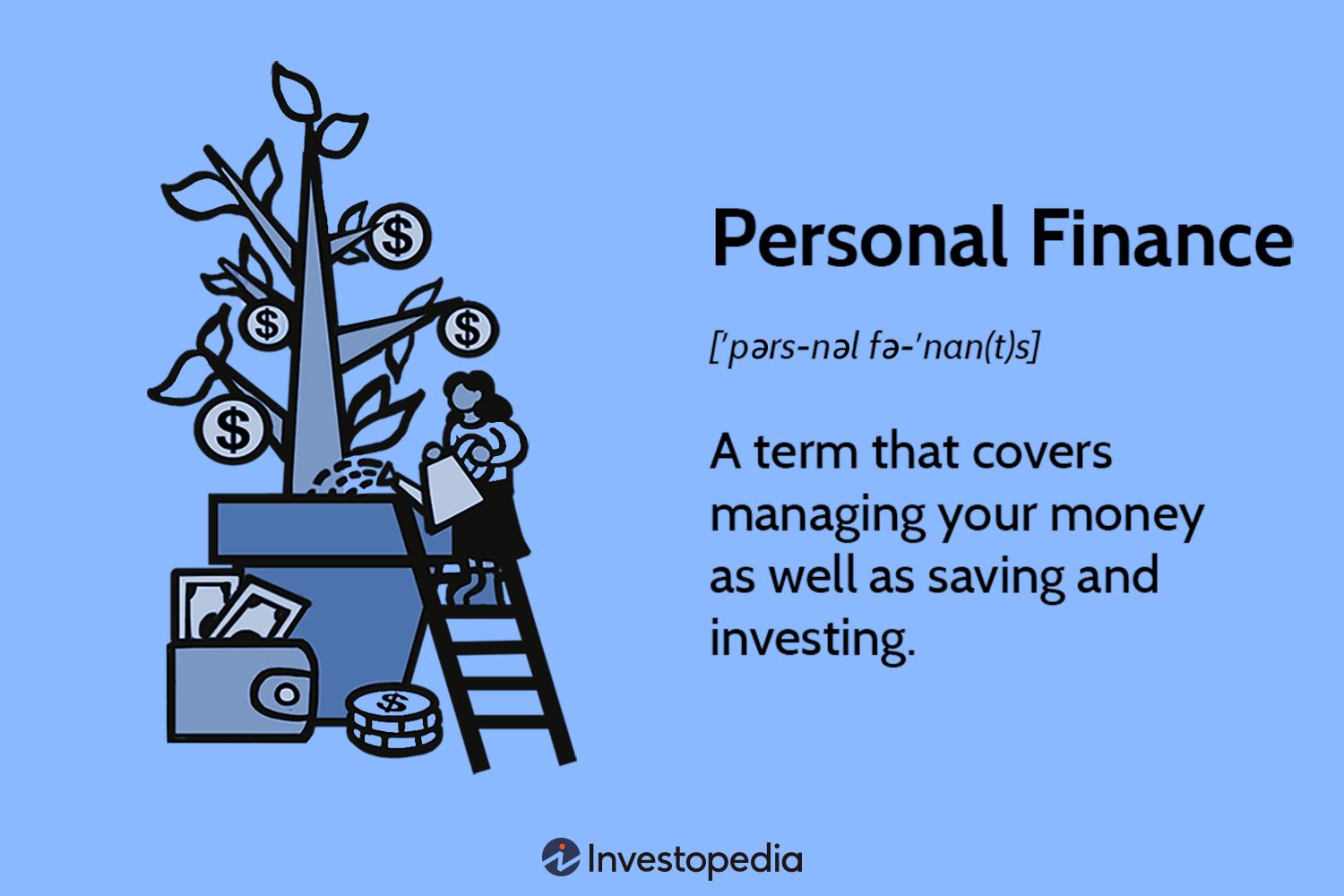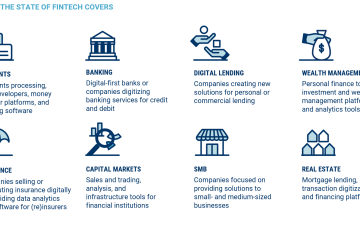To choose the right investment opportunities for your personal financial goals, consider your risk tolerance, time horizon, and investment objectives. Analyze the potential returns and the associated risks of each investment opportunity to ensure alignment with your financial goals.
Research and seek professional advice to make informed decisions based on your individual financial situation and goals. Finding the right investment opportunities for your personal financial goals requires careful consideration and analysis. By understanding your risk tolerance, time horizon, and investment objectives, you can tailor your investment decisions to align with your specific financial goals.
Evaluating potential returns and associated risks for each opportunity can help you make informed choices. Seeking professional advice and conducting thorough research are essential steps in selecting investment opportunities that best suit your individual financial situation and objectives. By following these key considerations, you can make strategic decisions that align with your financial goals and aspirations.
Identifying Your Financial Goals
When setting financial goals, consider factors like time frame, risk tolerance, and liquidity needs. Define your objectives clearly before seeking investment opportunities to ensure they align with your financial goals. This proactive approach can help you make informed decisions that support your financial aspirations.
Reflecting On Short And Long-term Goals
When identifying your financial goals, it’s essential to differentiate between short and long-term objectives. Short-term goals are those you aim to achieve within the next one to five years, such as saving for a down payment on a house or taking a dream vacation with your family. Long-term goals, on the other hand, are the larger milestones you set for more extensive time frames, often spanning 10 years or more. These goals can include planning for retirement or funding your child’s education.
By reflecting on both short and long-term goals, you can better align your investment choices with your overall financial objectives. Knowing what you want to achieve in the near future will allow you to make smarter investment decisions that generate quicker returns, while also considering your long-term aspirations ensures that you lay a solid foundation for financial stability and growth.
Evaluating Risk Tolerance
Another crucial aspect of choosing the right investment opportunities is understanding your own risk tolerance. Risk tolerance refers to your ability to handle the ups and downs of the investment market and your willingness to take on financial risks in pursuit of potential rewards. While some individuals may be comfortable with high-risk investments that have the potential for substantial returns, others may prefer a more conservative approach with lower-risk options.
To evaluate your risk tolerance, you need to carefully assess your financial situation, time horizon, and personal preferences. Consider factors such as your current income and expenses, the stability of your job, and your comfort level with market fluctuations. Understanding your risk tolerance will enable you to make investment decisions that align with your comfort level and help you achieve your financial goals while minimizing stress and anxiety.
Understanding Investment Options
When it comes to choosing the right investment opportunities for your personal financial goals, understanding the various investment options available is crucial. Exploring different investment vehicles and assessing market conditions are essential steps in making informed investment decisions.
Exploring Different Investment Vehicles
As an investor, it’s important to explore different investment vehicles to diversify your portfolio. These may include stocks, bonds, mutual funds, real estate, and alternative investments such as commodities or cryptocurrencies. Each investment vehicle has its own risk and return characteristics, so it’s vital to evaluate them based on your risk tolerance and investment horizon.
Assessing Market Conditions
Assessing market conditions involves analyzing economic indicators, geopolitical events, and market trends to identify potential investment opportunities. Understanding the current economic environment, interest rate movements, and market volatility can help in making informed investment decisions. It’s essential to stay updated with market news and seek guidance from financial professionals to navigate through market fluctuations.
Researching Potential Investments
When it comes to achieving your personal financial goals, choosing the right investment opportunities is crucial. Researching potential investments is an essential step in the decision-making process. By analyzing historical performance and conducting due diligence on companies, you can make informed choices that align with your financial objectives.
Analyzing Historical Performance
Before making any investment decision, it’s vital to analyze the historical performance of the potential investment. Examine the past returns and volatility of the investment to understand its risk and reward profile. Look for consistent growth and stability to ensure a reliable investment option.
Conducting Due Diligence On Companies
When evaluating investment opportunities, conducting due diligence on the companies involved is paramount. Research the company’s financial health, management team, competitive position, and industry trends. This process helps ensure that you are investing in fundamentally sound and reputable businesses.

Credit: fastercapital.com
Creating A Diversified Portfolio
Building a diversified investment portfolio tailored to your financial goals involves researching various opportunities in the market. Consider factors such as risk tolerance, time horizon, and investment objectives. Be sure to explore different asset classes, such as stocks, bonds, real estate, and alternative investments, to achieve a well-balanced portfolio.
Creating a diversified portfolio is crucial when it comes to choosing the right investment opportunities for your personal financial goals. It involves spreading your investments across different asset classes, industries, and geographical locations to minimize risk and maximize returns. When you have a diversified portfolio, you are not putting all your eggs in one basket. Instead, you are spreading your investments across various opportunities, which helps protect your portfolio from the volatility of any single investment. Let’s dive into the benefits of diversification and how it helps in balancing risk and return.Benefits Of Diversification
Diversification offers several benefits that can positively impact your investment success. Here are some key advantages: 1. Reduced Risk: Diversifying your investments lowers the risk of substantial loss caused by the failure of a single investment. When one investment underperforms, other investments in your portfolio can offset the loss, providing stability and protecting your capital. 2. Enhanced Return Potential: By including various investment opportunities within your portfolio, you increase your chances of benefiting from different market trends and economic conditions. Certain investments may perform better during specific periods, and diversification allows you to capture these opportunities and potentially earn higher returns. 3. Stability in Volatile Markets: Market fluctuations are inevitable, but a diversified portfolio can help cushion the impact of market volatility. When different assets in your portfolio react differently to market changes, the overall stability of your investments is maintained. 4. Capital Preservation: Diversification helps protect your investment capital by distributing it across different asset classes. This reduces the likelihood of significant loss that could occur if all your investments were focused on one area.Balancing Risk And Return
Balancing risk and return is a vital aspect of investment decision-making. Diversification plays a significant role in achieving this balance. Here’s how: 1. Lowering Risk: As mentioned earlier, by spreading your investments across various sectors and asset classes, you reduce the impact of any single investment’s poor performance. Diversification enables you to minimize potential losses and stabilize your overall portfolio. 2. Maximizing Return: While diversifying reduces risk, it also allows you to tap into various investment opportunities. By diversifying, you can potentially benefit from different sectors or asset classes that are performing well at a given time, increasing your overall return potential. 3. Asset Correlation: Diversification involves selecting investments with low to moderate correlations. This means that when one investment is experiencing a downturn, others are less likely to follow suit. By balancing assets with different correlation patterns, you can protect your investments during market fluctuations. 4. Personal Financial Goals: Balancing risk and return involves aligning your investment choices with your personal financial goals. Whether you are saving for retirement, funding your children’s education, or planning a big purchase, diversification allows you to tailor your portfolio to suit your specific objectives while managing risk. In conclusion, creating a diversified portfolio is a crucial step in choosing the right investment opportunities for your personal financial goals. By diversifying, you can enjoy the benefits of reduced risk, enhanced return potential, stability in volatile markets, and capital preservation. Additionally, diversification helps in balancing risk and return by minimizing potential losses while maximizing opportunities for growth. So, consider building a well-diversified portfolio that aligns with your goals and risk tolerance to achieve long-term investment success.Setting Investment Criteria
When selecting the right investment opportunities, setting investment criteria is crucial for aligning your choices with your financial goals.
Establishing Return Expectations
Determine the return expectations you have for your investments to define your risk tolerance and desired profitability.
Defining Investment Time Horizon
Know your investment time horizon i.e., how long you plan to invest for, which can influence your asset allocation decisions.
Seeking Professional Advice
When it comes to making the right investment decisions, seeking professional advice is crucial for achieving your financial goals.
Consulting Financial Advisors
Financial advisors provide personalized guidance tailored to your specific financial situation.
- Assess your risk tolerance and long-term goals.
- Create a diversified investment portfolio for optimal growth.
- Regularly monitor and adjust your investments based on market conditions.
Exploring Robo-advisors
Robo-advisors utilize algorithms to automate investment decisions based on your risk profile and objectives.
- Low fees compared to traditional financial advisors.
- Convenient online platforms for quick and easy investment management.
- Automated rebalancing to maintain your desired asset allocation.
Monitoring And Adjusting Investments
Choosing the right investment opportunities to achieve your personal financial goals requires careful monitoring and adjustment. Stay attentive to market trends and make necessary changes to optimize your investments for maximum returns.
Regular monitoring and adjustment of your investments are essential for ensuring that you stay on track towards your financial goals. By keeping a close eye on your portfolio and making necessary adjustments, you can maximize your returns and minimize potential risks. Here are some key strategies to consider:
Regular Portfolio Review
Regularly reviewing your investment portfolio allows you to assess its performance and make informed decisions. This involves analyzing the returns generated by each investment and comparing them to your desired outcomes. It’s important to keep track of any changes in the market or external factors that might affect the performance of your investments. By staying proactive in monitoring your portfolio, you can make timely adjustments to maintain alignment with your financial goals.
Rebalancing Strategies
Rebalancing your portfolio involves periodically realigning your asset allocation to the target levels you have set. This strategy ensures that your investments remain in line with your risk tolerance and financial objectives. Rebalancing typically involves selling overperforming assets and buying those that are underperforming to restore the desired asset allocation. This helps to keep your portfolio diversified and reduce the impact of market fluctuations on your overall returns.
There are different approaches to rebalancing, such as calendar-based rebalancing or threshold-based rebalancing. Calendar-based rebalancing involves setting a specific interval, like annually or semi-annually, to review and adjust your portfolio. Threshold-based rebalancing, on the other hand, triggers rebalancing when the deviation of an asset class from its target allocation reaches a certain percentage. Whichever strategy you choose, ensuring regular portfolio review and rebalancing is crucial for optimizing your investment returns.

Credit: www.instagram.com

Credit: www.amazon.com
Frequently Asked Questions Of How Do You Choose The Right Investment Opportunities For Your Personal Financial Goals
How Do I Choose My Investment Goals?
To choose your investment goals, assess your risk tolerance, time horizon, financial situation, and desired outcomes. Determine if you’re aiming for growth, income, or wealth preservation. Consult a financial advisor for personalized guidance.
How Do I Choose The Right Investment?
To choose the right investment, consider your financial goals, risk tolerance, time horizon, and investment knowledge. Research different investment options and seek advice from a financial advisor. Diversify your investments to minimize risk and maximize returns over time.
How Can I Know What Investments Would Be Best For Me?
To know what investments are best for you, consider your financial goals, risk tolerance, and investment time horizon. It is important to seek professional advice from a financial advisor who can guide you based on your individual circumstances.
What Makes A Good Investment Opportunity?
A good investment opportunity offers potential for high returns, low risks, and long-term growth. It should align with your financial goals, have a strong track record, and be in a growing industry. Conduct thorough research and seek professional advice before making any investment decisions.
How Can I Identify Suitable Investment Opportunities?
To identify suitable investment opportunities, consider your financial goals, risk tolerance, market research, and seek professional advice.
Conclusion
Finding the right investment opportunities for your personal financial goals requires careful consideration and research. By assessing your risk tolerance, time horizon, and desired returns, you can narrow down the options that align with your objectives. It’s crucial to stay updated on market trends and consult with experienced professionals when making investment decisions.
Remember, diversification is key to managing risks and maximizing potential returns. With a well-informed approach, you can pave the way towards financial success and secure your future.


